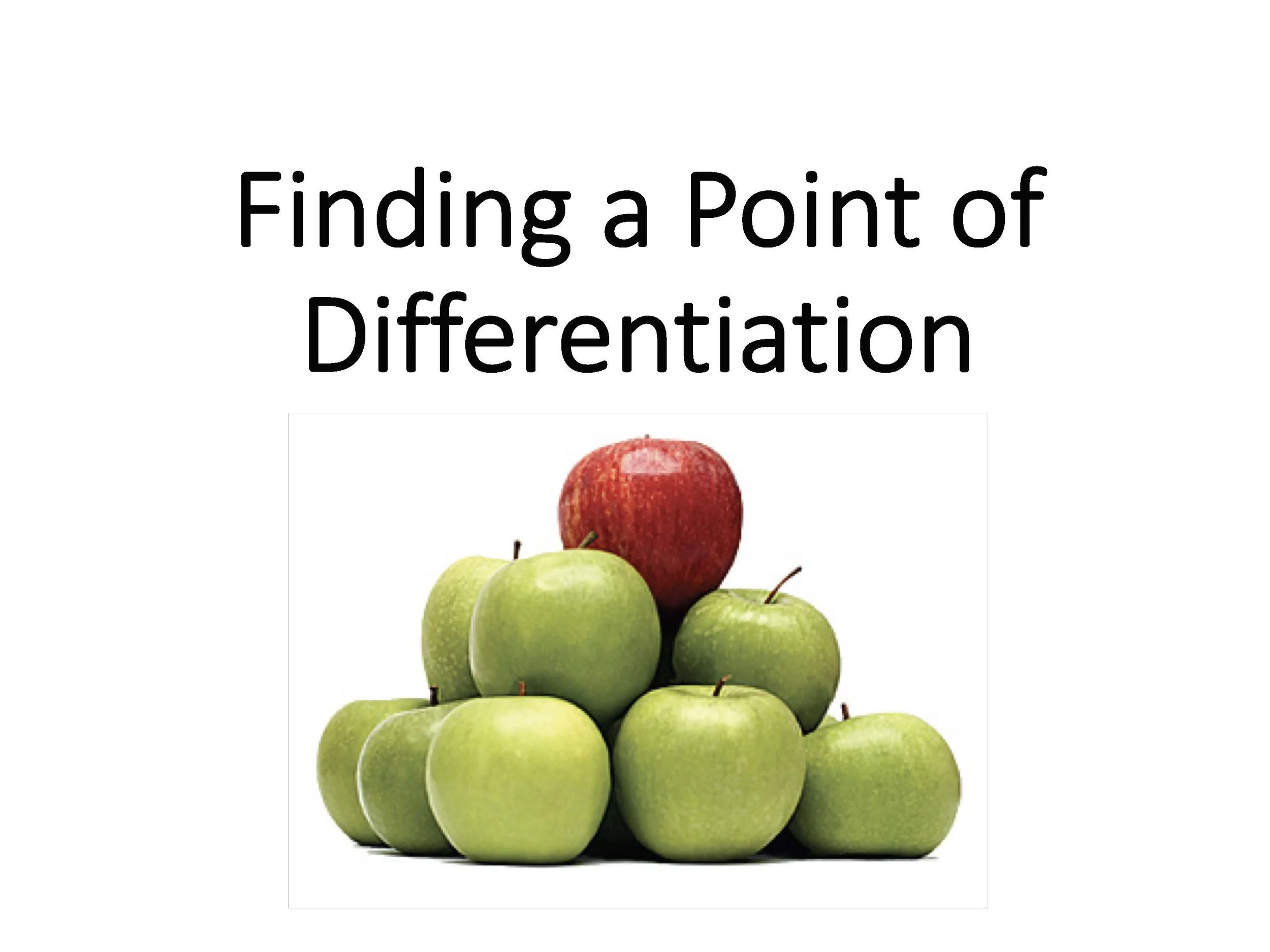In an earlier post about marketing strategy, we suggested that there are 3 key questions startups need to answer:
Who are you talking to? That’s your Target Market.
What are you talking to them about? This is the Frame of Reference, or the product category, or the group of competitors.
Why should they choose you? This is your Point of Differentiation.
The blogpost called “Targeting 101” tackled question #1 by discussing customer segmentation and picking a target market. Another blogpost called “Launch Into An Existing Market Category” tackled question #2 and frame of reference by showing why a startup doesn’t want to be the only company in its frame of reference. Now, it’s time to tackle the third question – Why should they choose or how do you find a POD (point of differentiation)?
First, you don’t have to be great at everything! But, you do have to start with your Points of Parity, called POP’s. POP’s are attributes, features or benefits, that all competitors in the frame of reference provide. Think of them as attributes that you would have to provide to even be considered acceptable in the category. For example, let’s look at fast food companies. I frequently use this example in my classes and students say that all fast food brands have to be, at a minimum:
Fast, <10 minutes
Inexpensive, <$8
Tasty, but possibly not healthy
Convenient, with lots of locations & drive-through
So if a new brand came along and call itself “fast food,” everyone would automatically assume it does all of the above. Instead, it has to identify how it wants to be different. It needs to find a way to be different, a POD. The short video below walks through how to work through this. It starts with good competitor research. You have to know your competitors as well as you know your customers.
By knowing your customers, you should have identified the benefits that drive their brand choice. In evaluating competitors, you need to identify what they say they do (and/or are believed to do) better than everyone else. Now, you have to find the best benefit you can, that no one else is delivering. If there isn’t one, you might want to rethink if the market really needs your offering. Remember, when you enter a market, you want to be able to entice customers because you offer something better that they need. Most customers already have a bunch of choices. Make your product offering stand out on where you want to differentiate, but remember to be “as good” on points of parity. If you need more ideas about how to find a POD, check out the examples in the Marketing Ocean chapter of our book, The Titanic Effect: Successfully Navigating the Uncertainty that Sinks Most Startups.
Well, it’s nearly the end of March. If you remember your history, an important date related to this book is coming up (hint – it’s in early April). Check back into the blog to find out how we are going to celebrate. And, don’t forget to place your pre-order for the printed version coming out June 11, 2019. If you are in Central Indiana, come hear our talk and workshop on The Titanic Effect at the Venture Club of Indiana, lunchtime on April 4th.


